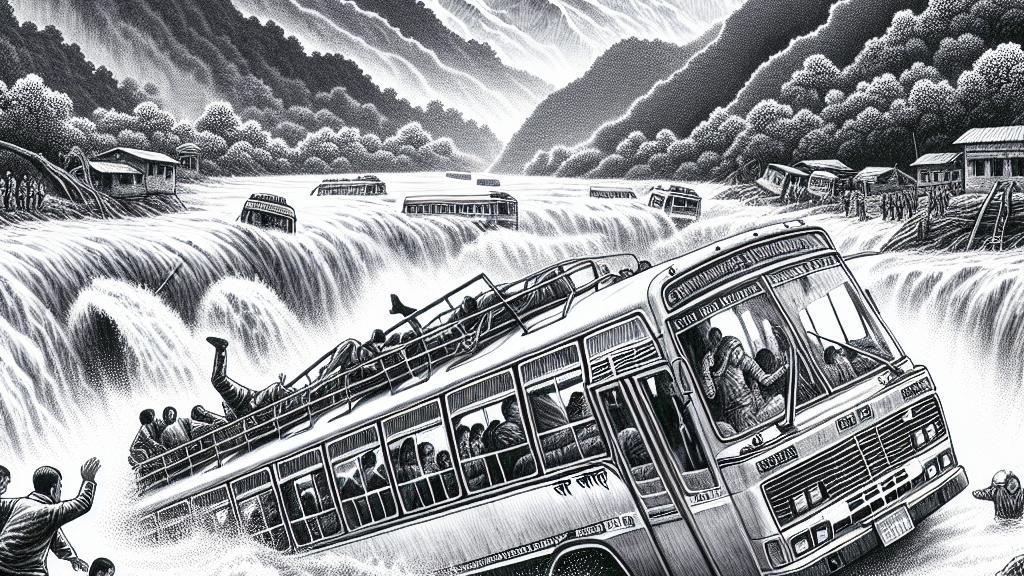Tragedy Unfolds: Indian Bus Plunges into Nepal's Churning Waters
Overview
- 14 fatalities reported in a horrific bus accident in Nepal.
- The Indian-registered bus fell into the perilous Marsyangdi River.
- Rescue operations demonstrated quick response but highlighted serious travel safety concerns.

Incident Overview
On August 23, 2024, a disastrous bus accident struck in the Tanahun district of Nepal, claiming at least 14 lives. An Indian-registered passenger bus, traveling from Gorakhpur to Kathmandu, veered off course and plunged dive into the turbulent waters of the Marsyangdi River at approximately 11:30 a.m. Initial reports indicated that around 41 passengers were onboard, with 29 extricated safely, while the fate of others remained tragic. This incident occurred during the monsoon season, which significantly increases the risk of accidents due to slippery roads and rising water levels, underscoring the stark dangers involved in traveling through Nepal's mountainous terrain.
Rescue Operations
In response to this tragedy, local authorities, including a dedicated team from the Armed Police Force, quickly mobilized for rescue efforts. A total of 45 police personnel were dispatched to the accident site to aid in the search and rescue operations. The swift action enabled rescuers to locate and transport 29 individuals to nearby medical facilities despite challenging conditions. The rapid rise of river levels due to recent heavy rainfall complicated rescue efforts; however, the commitment and professionalism of the rescue teams were commendable and crucial in preventing greater loss of life. This incident served to highlight the importance of preparedness and cooperation among agencies in emergency situations.
Background and Implications
The Marsyangdi River, which is known for its captivating beauty, also poses significant hazards, particularly during the monsoon months when increased rainfall can swell rivers and create hazardous driving conditions. This river has previously witnessed several accidents, raising awareness about local travel risks. Notably, recent landslides in the region have further intensified concerns regarding infrastructure reliability and vehicle safety. The tragic accident emphasizes the urgent need for improved roadway conditions, stricter regulations on passenger transport, and comprehensive training for drivers. As such tragedies recur, they serve as a grim reminder of the need for robust public safety measures and a greater consciousness of the perils associated with travel in challenging natural environments.

Loading...